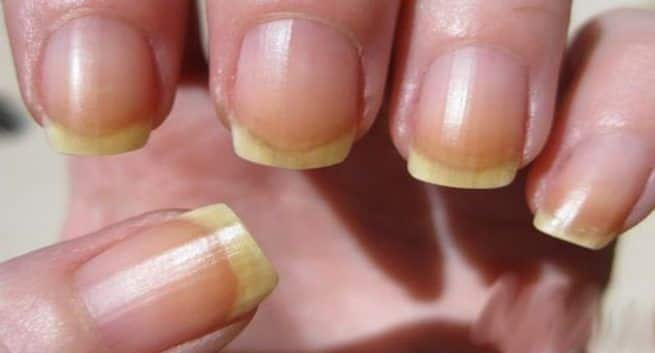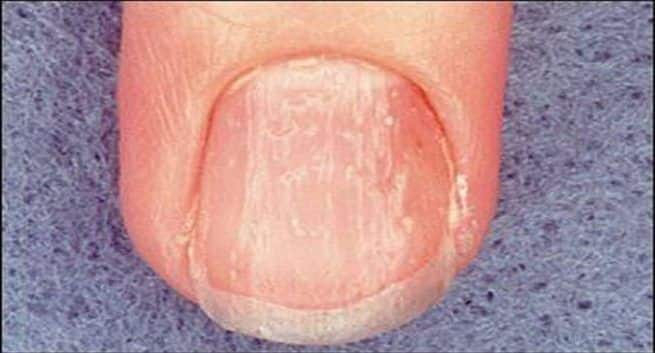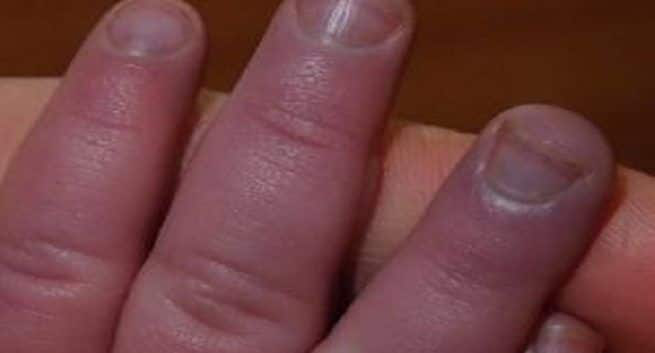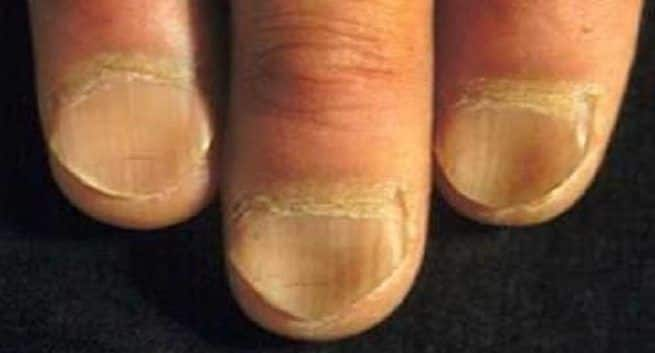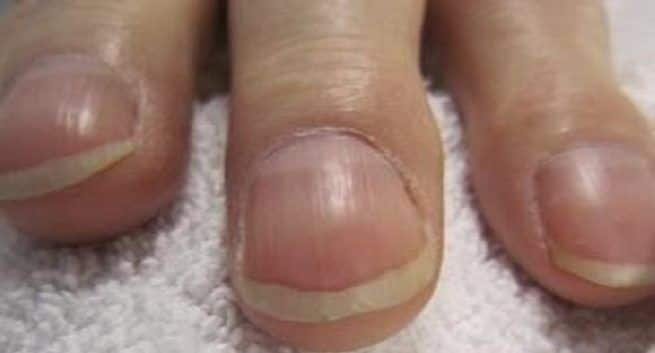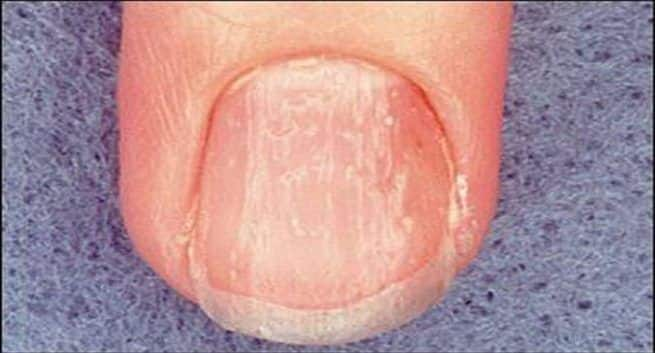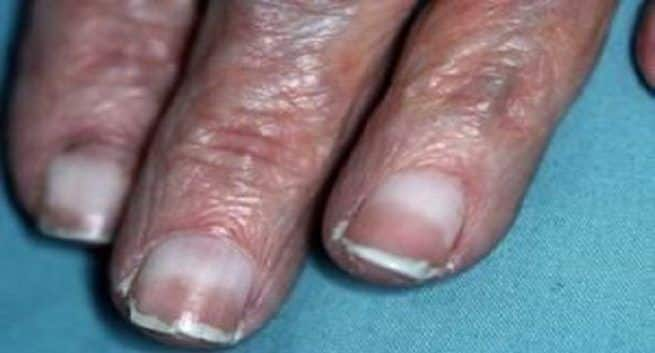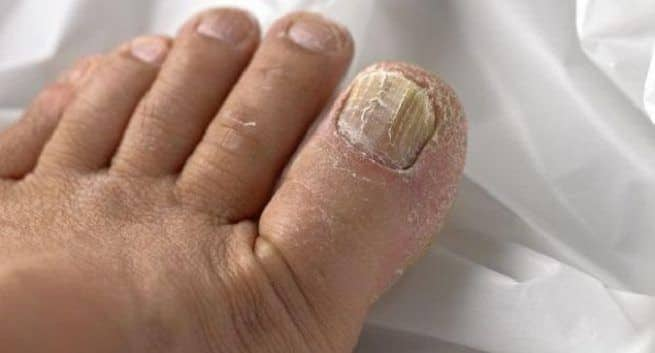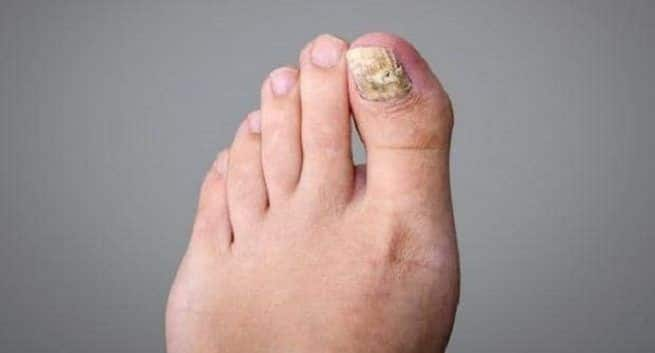Don’t Miss Out on the Latest Updates.
Subscribe to Our Newsletter Today!
Top 10 reasons for brittle and deformed nails
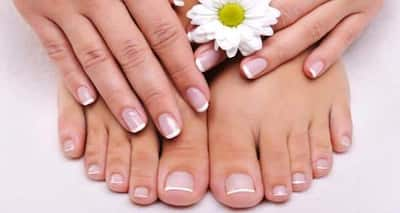
Here is what your nails could indicate about your health.
Brittle and bitten nails in a woman is a big turn off for a man. Eight percent of the male voters put it on the top of their list of big turn offs. So, are nails just the tools for seduction, or do they have other purposes too?
Nails are useful in a variety of ways scratching, clawing, peeling an orange, picking up a needle, pulling out a splinter from a finger, removing the plastic sheath from the bottle, to name a few. But the main function of the nails is to protect the tips of our fingers and toes. And this is not the only reason why we should pay attention to our fingernails.
Brittle nails are often a normal result of aging. But they could also indicate certain medical conditions. But before proceeding with the cause of brittle nails and deformed nails, it is important to know how our nails are made.
Also Read
Structure of the nail
Made up of tough protective protein called keratin, the growth of nails occurs in the nail matrix which is tucked under the skin behind the nail. The visible part of the nail is called the nail plate which sits on top of the nail bed which has a network of blood capillaries. The crescent moon shape at the base of the nail plate is the lunula. Nail folds are slender skin grooves that hold the nail plate in place. And the flap of thin tissue present over the base of the nail plate is the cuticle.
What brittle nails and deformed nails indicate
1. Brittle nails
Brittle nails are nails that crack or chip easily and are usually thin. Nails become brittle as you age and it is normal. Long term use of nail polish or long exposure to moisture such as dishwashing or swimming too can cause brittle nails. Brittle nail syndrome is a medical condition in which the nail plate becomes increasingly fragile or a disease that involves the nail matrix. Studies have shown that brittle nails affect about 20 percent of the population and women are affected twice as frequently as men. Brittle nails could be a significant cosmetic problem, and many sufferers find these nail abnormalities to be painful, to impair daily activities, and to have a negative impact on occupational abilities.
Underlying condition: Hypothyroidism, a condition in which your thyroid gland does not produce sufficient thyroid hormone.
Early symptoms of hypothyroidism:
- Fatigue
- Weight gain
- Thinning and brittle nails
- Depression
- Heavy and irregular periods in women
2. Yellow nails
Yellow nails are the characteristics of a syndrome called yellow nail syndrome: As the name suggests it is a condition in which the nails show a yellow discoloration. The discoloration occurs because the nails thicken and new growth slows down.
The patch gradually spreads and reaches the base of the nail causing the nail to separate from the skin underneath the nail. This condition is termed onycholysis. The discoloration (yellow colour) occurs when the gap between the nail and the skin underneath becomes infected.
Underlying condition Yellow nail syndrome is actually a rare disorder consisting of three conditions, namely, lymphoedema, nail discolouration (yellow in this case) and pleural effusion (respiratory problems). Read more about respiratory problems.
Symptoms of lymphedema It is a condition in which there is swelling of body parts, especially arms and legs, because of the blockage in the lymphatic system. This causes fluid retention in the cells and further swelling. Lymphedema commonly occurs when the lymph nodes are removed or damaged as part of cancer treatment. The symptoms are
- Swellings of arms and legs; usually one arm or leg, but swellings can occur in both arms and / or legs.
- Hardening and thickening of the affected skin.
Symptoms of pleural effusion When fluid builds up in between the layers of tissue lining the lungs and chest cavity, it is called pleural effusion. Symptoms include
- Shortness of breath, chest pain
- Cough
- Fever
- Hiccups
- Sometimes no signs are evident
3. Psoriatic nails
Psoriasis is an inflammation of skin. When the psoriasis affects nails it is called psoriatic nail disease. This condition generally is evident in people who are affected by psoriasis but about 5 percent of patients may show psoriatic nails even without being affected by psoriasis. The severe form of this disease can cause functional and social impairments if left untreated. Read more about Psoriasis.
Read more about causes, symptoms, diagnosis and treatment of psorasis.
Underlying (evident) condition: Psoriasis
Nail symptoms:
- Small pits appear on the surface. This is called pitting of the surface.
- Nails can thicken because of fungal infection.
- Onycholysis.
- The nail becomes raised because of formation of chalk-like substance under the nail. The nail feels tender.
4. Dusky or bluish nail bed
Dusky, gray or bluish tinged nail beds are one of the late signs of chronic bronchitis. This disease is a part of the group of lung diseases called chronic obstructive lung diseases (COPD). Read more about COPD.
Symptoms of chronic bronchitis
- Morning cough that brings up mucus from the lungs that progressively gets worse.
- Headaches, runny or stuffy nose.
- Shortness of breath, wheezing, fatigue as the disease progresses.
- Tightness in chest.
- Late signs could be the bluish tinge in the skin, lips and/ or nails.
5. Koilonychia
Koilonychia is a term for deformed nails in which the nails have raised ridges, brittle, thin and are inwardly curved, sort of spoon shaped. This type of nails indicate iron deficiency anaemia. Read about why anaemia is more than a lack of iron.
Symptoms of anaemia: If the anaemia is mild you may not have any symptoms. As the anaemia gets worse, you may show symptoms such as
- Headaches, problems in concentrating and thinking, tiredness
- Blue colour to the whites of the eyes, brittle and deformed nails, pale skin colour
- Shortness of breath
6. White nails and clubbing of nails
Healthy nails appear pink but if you have chronic liver disease, your nails will become whitish and there is clubbing of nails. Clubbing is a deformation of nails where the nail bed becomes soft and the nails appear to 'float' instead of being firmly attached. The finger tips appear bulging (the finger looks like a club), so the nails grow downwards and look like the round part of the upside down spoon.
Symptoms if chronic liver disease
- Spots surrounded by fine blood vessels
- Easy bruising and nosebleeds due to delayed clotting as the liver cannot produce sufficient clotting proteins
- Nail changes to whitish in colour and clubbing
- Breast enlargement in men
Other underlying conditions for clubbing: Inflammatory bowel disease (IBD), cardiovascular disease, and AIDS
7. Nail pitting
This is a deformity of nails in which dents or depressions appear in the surface of the nail because of defective development of the nail plate.
Underlying conditionsPsoriasis, alopecia areata, sarcoidosis
Symptoms of alopecia: It is an autoimmune disorder which causes one or more patches of hair loss. This can affect men as well as women.
Symptoms of sarcoidosis: Sarcoidosis is the inflammation of tissues of the body. It can affect any part of the body but is commonly seen affecting the lungs and skin (lymph nodes). Symptoms are
- Shortness of breath and cough that does not go away
- Skin rashes and bumps
- Weight loss, night sweats, fatigue and fever
- Pitting or loosening of nail
8. Terry's half and half nails
This is a nail condition in which the proximal end of the nail (towards the base) is white and the distal end (towards the tip) is dark in colour.
Underlying conditions Kidney disease and liver disease
Symptoms of renal disease:
- Brown band at the junction of the free edge and the bedded nail.
- Puffy eyes, hands and feet
- Shortness of breath, fatigue
- Loss of appetite, nausea and vomiting, increased thirst
- Weight loss
- Cloudy urine
9. Beau's lines
Beau's lines are deep indentations that run across the fingernails (horizontal ridges). These are different from nail ridging which is the vertical indentation in the nails. Beau's lines are generally caused by illness that affect the whole body. Beau's lines could also indicate zinc deficiency.
Underlying conditionsHeart attack, uncontrolled diabetes, measles, mumps
10. Complete nail destruction
Also called onychomycosis, in this case the nails can be completely destroyed. Though the disease can affect all the toe nails and finger nails, it most commonly affects the big toe nail or the little toe nail. This is caused by trauma to the finger / toe or inflammation of the nail fold (paronychia).
Read more about causes, symptoms, diagnosis and treatment of lung disease.
Underlying conditions Yeast, mold or lichen infection, trauma, chemotherapy and vasculitis
Read more about causes, symptoms, diagnosis and treatment of anemia.
You may also like to read:
- Do you follow these manicure-pedicure dos and don'ts?
- Are ingrown nails troubling you? Here's help!
- Tips for healthy nails
- 7 reasons for breathlessness you probably didn't know about
For more articles on diseases & conditions and nail care do visit our Nail care and Diseases and Conditions Section. Follow us on Facebook and Twitter for all the latest updates!For daily free health tips, sign up for our newsletter. And to join discussions on health topics of your choice, visit our forum.
Picture source: weddingcometrue.com, fithealthinfo.com, akdec.org, createmagicalnails.com, dermquest.com,
hardinmd.lib.uiowa.edu, med126.com, nailstren.com, nwedible.com.
Reference:
https://www.ncbi.nlm.nih.gov/pubmed/16198786


